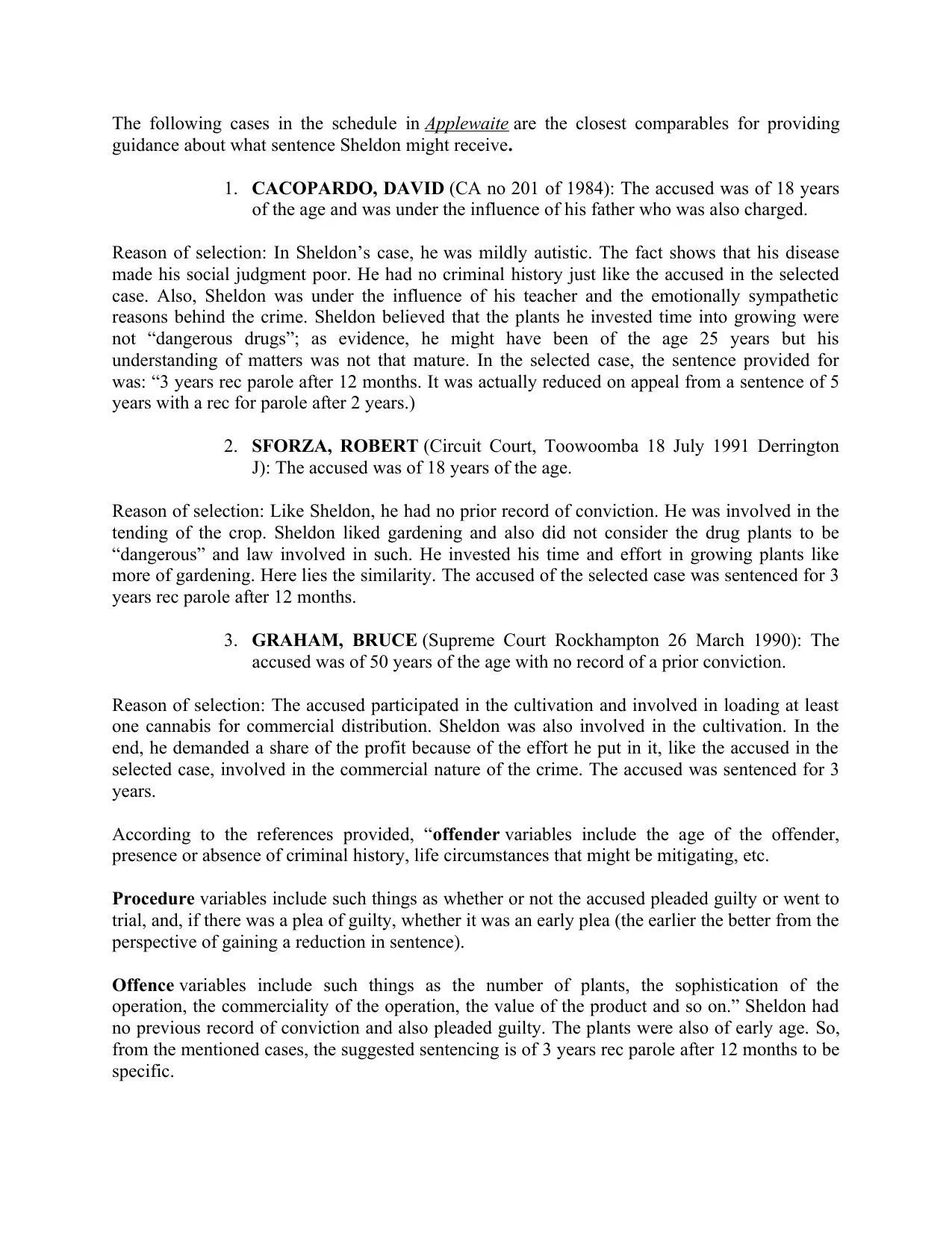CRIME 2: Sentencing Comparison and Analysis of Applewaite Cases
VerifiedAdded on 2022/10/12
|1
|571
|134
Homework Assignment
AI Summary
This assignment delves into the process of sentencing by comparing Sheldon's case to similar cases outlined in Applewaite (1996). The analysis considers factors like the offender's age, criminal history, and mitigating circumstances, along with offense variables such as the number of plants and the commerciality of the operation. By examining cases like CACOPARDO, SFORZA, and GRAHAM, the assignment highlights the relevance of offender and procedure variables in determining a sentence. The solution suggests a sentence of 3 years with parole after 12 months for Sheldon, based on the comparisons and the mitigating factors present, such as Sheldon's mild autism and lack of prior criminal record. The assignment underscores the importance of comparative analysis in sentencing decisions, drawing upon the variables and case precedents to suggest an appropriate sentence. The assignment is a practical application of legal principles, providing a clear and concise analysis of the sentencing process.







![[object Object]](/_next/static/media/star-bottom.7253800d.svg)